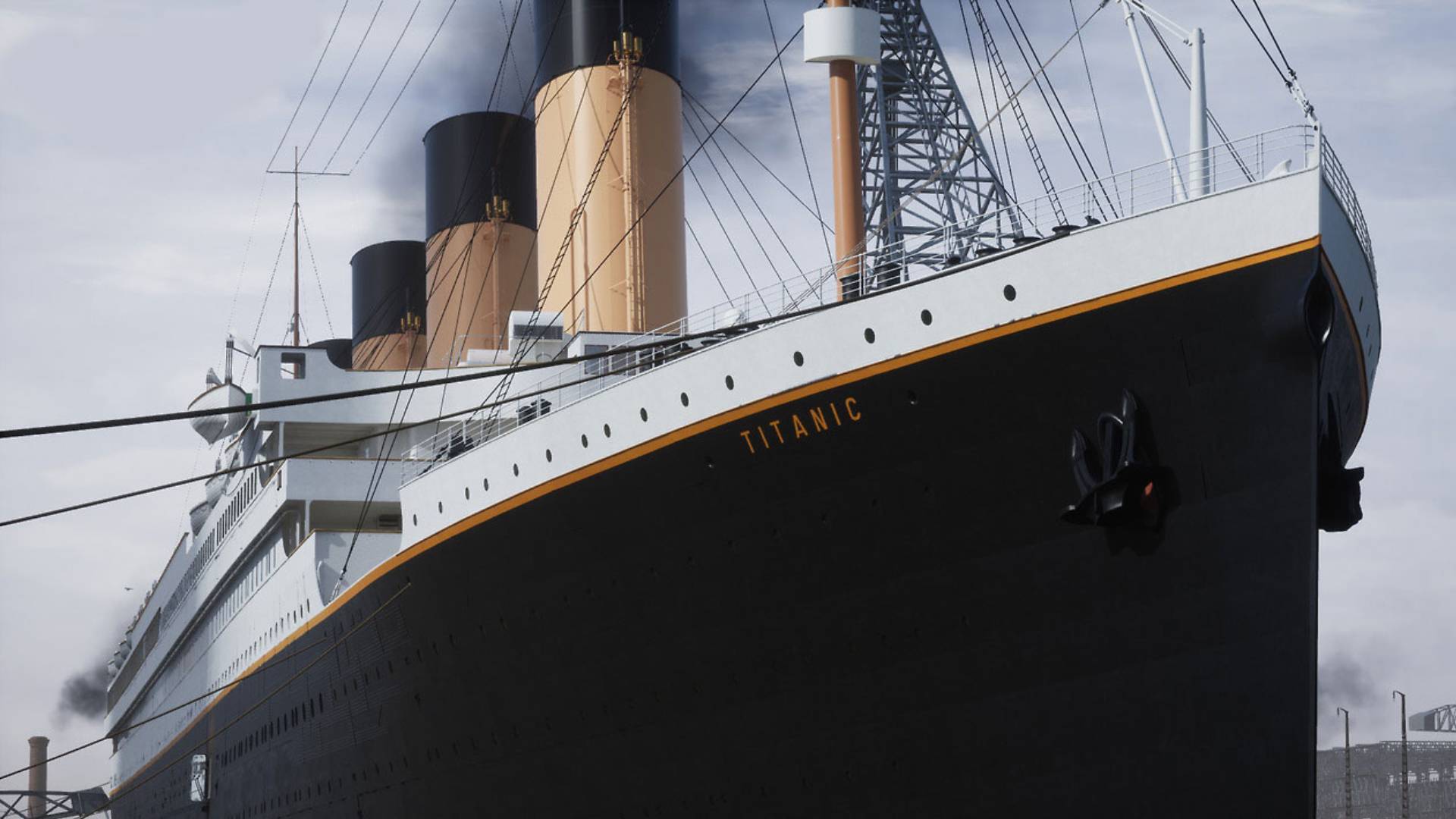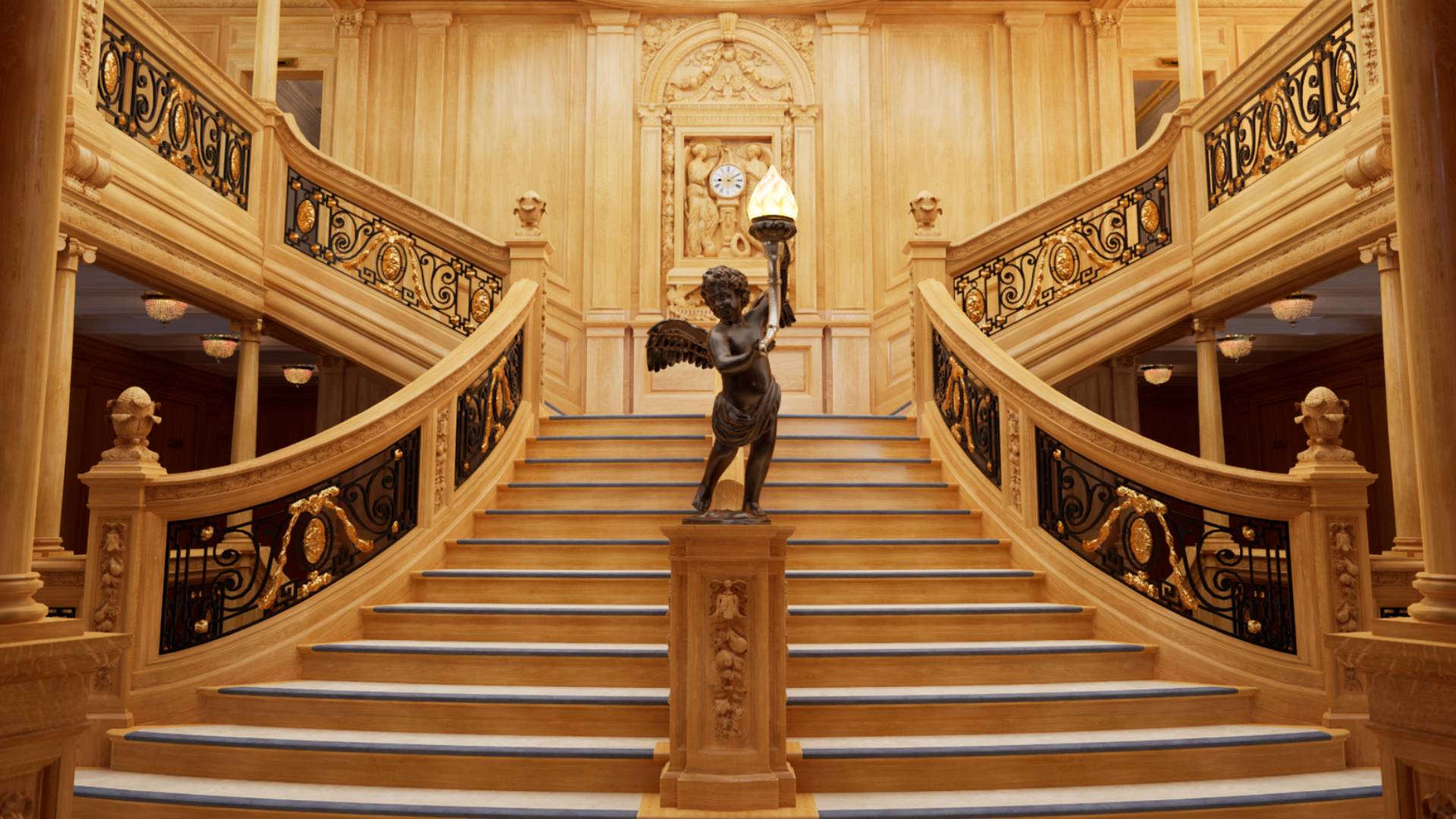I’ve become obsessed with a simulation of the Titanic
A hull of a game

For developer THG, building a forensically accurate recreation of the famous doomed steamliner RMS Titanic – down to the rivet, mind you – was the easy part. The difficult bit has been figuring out how to make a game out of it.
Welcome to the existential puzzle that is Titanic: Honor and Glory. Its team of amateur developers has been building the ship in Unreal Engine for the best part of a decade, funded exclusively through Patreon backers and motivated, as far as one can tell, by sheer historical imperative. If you’re at all interested in the ship and its tragic sinking, you understand intrinsically that the project feels of great importance. Turning it into anything like a traditional ‘game’ is a secondary concern.
And obviously, you’re interested. Everyone is. The Titanic disaster is one of those events that seems to have shaken the collective psyche indelibly, a trauma that passes down from generation to generation. I wouldn’t be surprised if, like me, you’d imagined what it must have been like to have been aboard the Titanic on its maiden voyage on the night of April 15, 1912, and to have been faced with standing aboard a sinking unsinkable ship in the north Atlantic ocean. And once you’ve imagined it, the image is ingrained.
James Cameron played his part, too, of course. The 1997 movie Titanic was one of the last great story beats of the pre-internet monoculture. Millions of us saw it, cried at the end, and intermittently hummed the Celine Dion song until at least 2001. 14 Oscar nominations. 11 wins. $2.2bn at the box office. If there was even the slightest danger of Titanic’s place in our collective consciousness fading with time before 1997, that movie eradicated it. The events of one night in 1912 became as central to ‘90s pop culture as Britney Spears dancing down a high school hallway, or a South Park plushy.
Submerse yourself

All of Titanic’s survivors have now passed away. But plenty of us who were there when the movie hit cinemas are still around to tell our story. And maybe that’s why stepping aboard a virtual recreation of it feels so significant – it’s about the passing of time, after all. We find shipwrecks eerie because they show us one tragic moment, preserved in time. And as we age, we realize that everything in the world around us changes. It’s inevitable. It’s also a bit scary.
So you find yourself coping in odd ways, like taking great comfort in a virtual preservation project like Titanic: Honor and Glory. It seems to matter an awful lot that every conceivable effort has been taken to get each architectural and design detail right, down to the precise layout of the ship and the riveting of its hull panels, the wood detailing on the pillars of its famous feature stairway that leads down six decks from the boat deck down to E deck.
Incredibly, it’s not the only project to take on this exact objective. A Mafia: City of Lost Heaven mod simply called ‘Mafia Titanic Mod’ uses Take Two’s 2002 crime caper as the foundation for its own virtual restoration of the ship. It’s been in development for over 15 years, and it’s largely the work of one man, Dutch maritime engineer Robin Bongaarts. It’s vastly impressive in its own right, but it’s bound to the old tech. Honor and Glory is free to use all of Unreal’s muscle to bring realism.
Sign up for breaking news, reviews, opinion, top tech deals, and more.
What a thing of beauty THG has created. It says a lot about the movie’s place in the absolute fabric of our culture that as soon as you load it up, you instinctively know your way around. But there are also so many details the movie didn’t show, areas that we’ve generally only seen after the fact, on the sea bed, overrun with rust and bacteria.
Eroding history

Time is quickly eroding the real ship. Although it’s remained exactly where it fell on the ocean floor that night 110 years ago, 4000 meters down, it will not be around for much longer. The aforementioned bacteria, halomonas titanicae, is eating the vessel at a prodigious rate and if there was ever any conversation about raising the wreck and preserving it on land before, it’s been categorically ended by the bacteria infestation. Not only is the wreck now much too weakened to withstand any attempts to raise it, within years it won’t even exist at all.
A collection of Unreal Engine assets shouldn’t really have a bearing on that sense of loss. But it just does, doesn’t it? Virtual worlds give us an immersive document for preserving environments that photography and even cinema can’t. You can walk around in Honor and Glory’s Titanic and understand for the first time how difficult this space must have been to navigate even when everything was fine, in the middle of the daytime, long before anything started taking on water and its 2200 inhabitants were all rushing to make it up to the lifeboats.
The dimensions of its corridors are nightmarish when you think about people trying to escape with their lives from them, up onto the boat deck. Not only are they incredibly tight, they’re also laid out like a circuit board, tangles of right angles and precious few signs anywhere. It’s a misconception that those in steerage were locked down in the lower decks to allow the first-class passengers to board the lifeboats first. James Cameron’s movie script doesn’t quite tally with survivor accounts on that front. Instead, those down in steerage were simply lost – they’d never been up to the higher decks before where only first-class passengers were permitted, and there were no maps of the ship to help them navigate. It didn’t matter that there were no locked gates in their way – in the end, there might as well have been.

Titanic: Honor and Glory’s sinking sequence demonstrates that in no uncertain terms. At the time of writing, this is as ‘gamey’ as the game gets, along with a scattering of collectible postcards found around the ship. The Titanic hits an iceberg and begins to sink while you’re aboard. The fact that you’re alone on an eerily silent steamliner makes it all the more unsettling and poignant – it’s as though you’re a ghost, displaced in time, watching a tragedy unfold that you have no agency over. Which is, of course, exactly what you are.
This might be the only game I’ve played in which it doesn’t seem to matter that there are no characters, dialogue, objectives, interactions, or inventory. Dear Esther is like Destiny by comparison. The point is to preserve the place, and although the project’s still under development and evolving over time, it’s already done that to an incredible, and heartening, degree.

Ad creative by day, wandering mystic of 90s gaming folklore by moonlight, freelance contributor Phil started writing about games during the late Byzantine Empire era. Since then he’s picked up bylines for The Guardian, Rolling Stone, IGN, USA Today, Eurogamer, PC Gamer, VG247, Edge, Gazetta Dello Sport, Computerbild, Rock Paper Shotgun, Official PlayStation Magazine, Official Xbox Magaine, CVG, Games Master, TrustedReviews, Green Man Gaming, and a few others but he doesn’t want to bore you with too many. Won a GMA once.